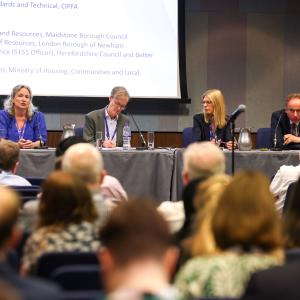The latest homelessness figures show that rising rents, constraints on housing benefit and cuts to council budgets are all coming home to roost
Perhaps the oddest aspect of last week’s story about the 14% increase in homelessness in 2011 was the government placing the blame on our ‘debt-laden economy’. There was a hint of desperation there, given that the housing minister has proclaimed his (genuine) commitment to tackle homelessness and has reminded us repeatedly that he managed to preserve his department’s homelessness budget when most of its other spending was drastically cut.
If the real reason was levels of personal debt, then we would expect both mortgage repossessions and rent arrears to be big components of the figures. Yet – at 3% of homelessness acceptances in each case – they remain small but growing factors. The big numerical increases in the latest figures are in people being told to move by family or friends with whom they are sharing, and in people coming to the end of shorthold tenancies.
The first of these is not surprising, given that overcrowded, concealed and shared households are by far the biggest component of unmet housing need: according to the DCLG's own figures, more than 5% of English households are in need for these reasons. What we are seeing is evidence of the failure to provide enough homes - which of course is a responsibility that goes back to previous governments - combined with greater friction among those having to share, which is very likely due to factors such as increased unemployment and short-time working, making living arrangements more precarious.
There is a hint too of a problem which the government knows is likely to be another driver of homelessness in the months to come. Private tenancies coming to an end have been a declining factor in homelessness – until now, when they have suddenly increased by more than a third. This probably reflects three problems which can only get worse. One is the continuing demand for private lettings, with every incentive for landlords to create new tenancies and push up rents. The second is the effect of housing benefit changes, which are making landlords more reluctant to give tenancies to benefit recipients. And the third is a decline in advice and prevention services.
There were predictions last year of widespread cuts in these services, which are now having an effect on homeless people (and the figures) themselves. Housing minister Grant Shapps protests that he has preserved the homelessness budget, but his central funding for prevention services is only a fraction of what local authorities spend on advice, funding of voluntary projects, and other measures which help keep people in their homes.
As I pointed out in looking at the initial rise in homelessness six months ago, these services are much more vulnerable to cuts than are (say) council housing services, because they are paid for from councils’ general funds.
The government can still point to its track record in handling the consequences of homelessness as one of its real achievements, because use of temporary accommodation remains static and relatively low. Indeed, although the industry’s first Housing Report in October gave the government a ‘red light’ for its homelessness record, it praised the low levels of people being forced into temporary accommodation. However, there are worrying signs here too. Use of bed-and-breakfast hotels, rightfully regarded as the worst form of temporary accommodation, grew by one third to affect 3,000 more households in 2011.
The government wants councils to respond to homelessness by using the private rented sector, and it is already doing that on a significant scale. However, with ever rising rents, an ever more constrained housing benefit system and diminished council budgets, this begins to look like pie in the sky. Six months ago I said that the worst is yet to come - I’d prefer to think that I am going to be proved wrong.









